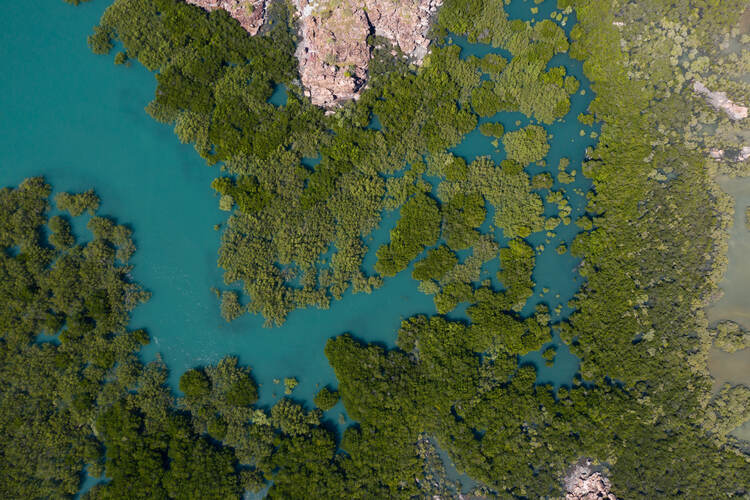
Researchers in Australia have discovered a vast sunken landmass off the northwest coast that was once home to up to half a million people
By
Among the First Nation’s people living in coastal parts of the Kimberley region of northwest Australia a story has been passed down from generation to generation that speaks of a rich landscape that was drowned long ago under rising sea waters. And now, a new study shows that this story is more than just a myth.
Researchers at Queensland’s Griffith University have announced the discovery of a huge, and now submerged, landmass that was home to up to a half-a-million people between about 65,000 years ago and the eventual drowning of the landmass due to climate change some 18,000 years ago.
The land mass, which now forms a part of Australia’s northwest continental shelf, once covered some 390,000 square kilometres, which is an area one-and-a-half times larger than New Zealand is today, that stretched from today’s Kimberley coastline halfway towards the island of Timor and connected the Kimberley and western Arnhem Land. Researchers say that the sunken landmass was ecologically diverse and contained lakes, rivers, a vast inland sea and fringing archipelagos, with lead scientist on the project, Kasih Norman, describing the landscape as ‘complex’ and ‘unlike any landscape found on our continent today’.
But what happened to the land, and why did it sink below the waves? The answer is climate change. This time, though it wasn’t human-caused climate change but was the end of the last Ice Age. During the last Ice Age, which occurred between 115,000 and 11,700 years ago, sea levels around much of the world were considerably lower than today due to so much water being trapped in ice and glaciers. This meant that shallow seas between Australia and Indonesia were much smaller than they are today and the land masses correspondingly bigger, but then, as the last Ice Age started to lose its grip around 18,000 years ago, and the planet heated up again, sea water levels started to rise, and this low-lying landscape was submerged.
Although many continental shelves around the world were dry land during the last Ice Age what makes the Kimberley one unusual is that scientists had long thought that the land mass here was largely unproductive and so ignored by indigenous peoples. But, according to this new research, this assumption was incorrect, and at times, hundreds of thousands of people lived here, and the land was anything but unproductive. It’s thought that the area was likely a single cultural zone, with similarities in ground stone-axe technology, styles of rock art, and languages found by archaeologists elsewhere in the Kimberley and Arnhem Land.
One of the key geological features of the findings was that a large archipelago extended out off the landmass towards Indonesia and the research team believe that by using the archipelago as stepping stones people might have been able to migrate in stages from Indonesia to Australia.
Related articles:
Drought may pose a bigger threat to Australia’s forests than bushfires




